Looking after your native garden
After understanding your garden and deciding what type of garden you’d like, choose plants suited to your planting location using the ‘Native plants of the Inner West’ section. Be sure to check the water, soil and sunlight requirements as well as height indications.
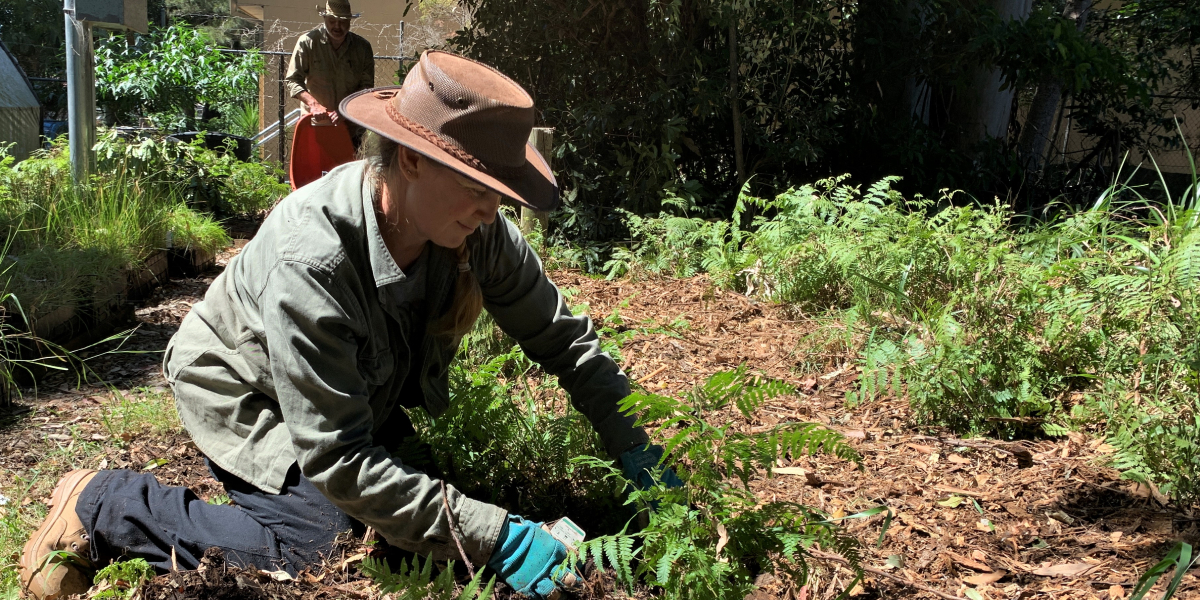
Planting
Before planting, prepare the area where you would like plant. Remove weeds, loosen compacted soil and push back any mulch until you have bare soil.
1. Dig a hole. It should be twice as wide and deeper than the pot. Keep the soil to the side for when you refill the hole.
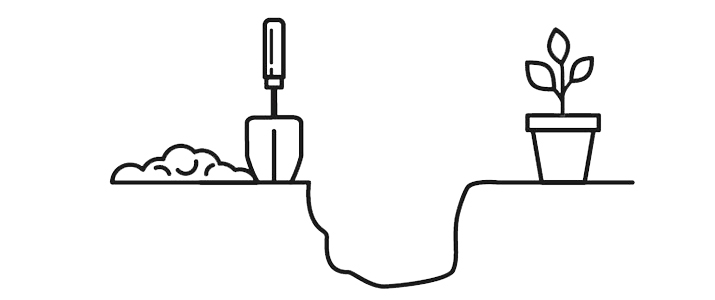
2. Loosen the plant in the pot. Gently squeeze the tube and tap the side of the pot with a trowel.

3. Keep you hand over the soil at the top of the pot and the plant stem between your fingers, then turn the pot upside down and gently pull the pot off. If the roots are tightly bound, loosen them gently with your fingers. Do not pull the plant upwards by the stem as this will damage the surface roots.
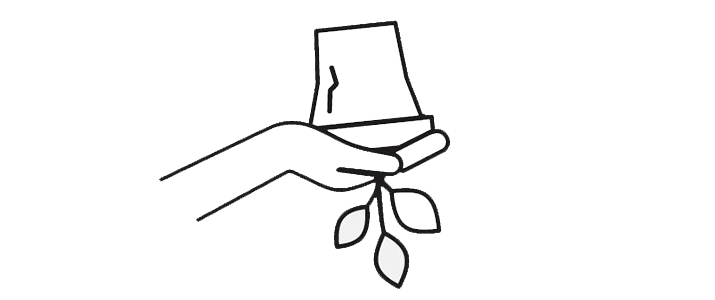
4. Turn the plant the right way up and place it into the hole (without the pot). Hold the plant so that it is standing upright and straight while you fill in the rest of the hole with the soil you saved. Fill the hole with soil not mulch. Push the soil firmly with your fingers so there aren't any air pockets.
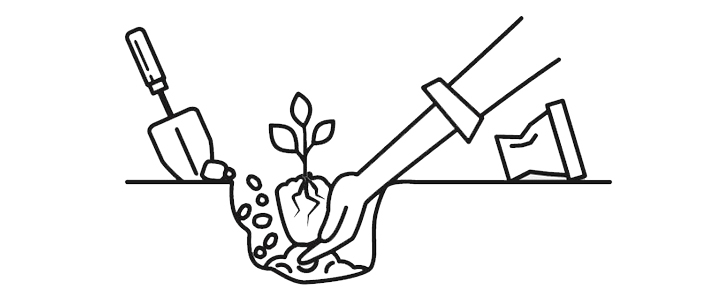
5. Gently push down the soil so that your plant is in the middle of a shallow crater. This will help to trap water and send it straight to the roots.
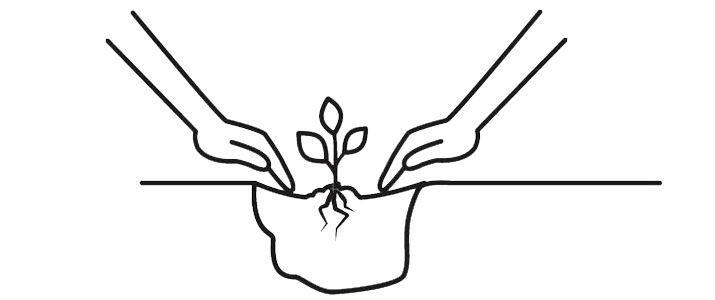
6. Spread mulch around your plant. Leave space around the plant stem as the mulch can cause the stem to rot.
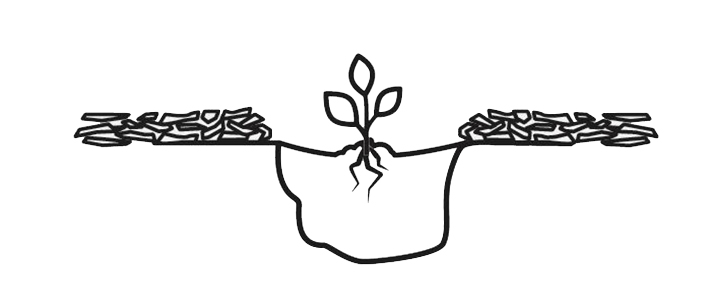
7. Gently water your plant. Water enough to fill the crater, leave it util is has been absorbed then repeat the process two to three times.
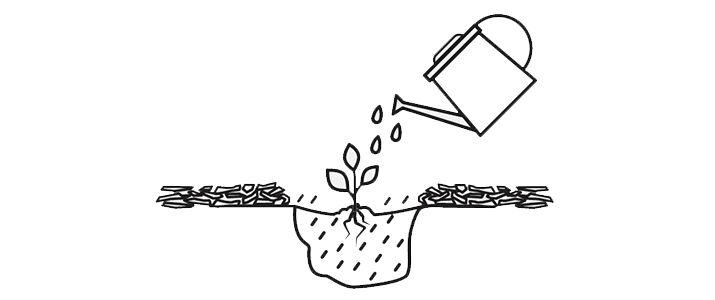
Planting images above used with permission from Canterbury Bankstown Council.
Watering
Once in the ground, your plants will require less maintenance than when they were in pots. Watering heavily, once per week, encourages stronger root growth and greater drought tolerance than watering small amounts more often. Maintain this for six to eight weeks, then once the plants are established, watering can be less frequent.
If you have a larger garden, consider installing a rainwater tank to irrigate your plants. Rainwater tanks come in many sizes and designs to suit your home and you may even qualify for a Council tank rebate.
Remember to keep water loving plants away from pipes and tall plants away from powerlines.
.jpg)
Mulching
Mulching is very important in keeping the soil healthy, improving water holding capacity and suppressing weeds.
There are different types of mulch but choose an organic one made from bark or chipped hardwood rather than pine chips. Mulch should cover the ground to a depth of 10cm and topped up annually. When spreading mulch, remember to keep an area clear of mulch around the plant stem to prevent fungal infection and insect attack.
Mulch should be spread at a thickness of at least 10cm however, to avoid rot it should never be placed right up to the stem of any plant.
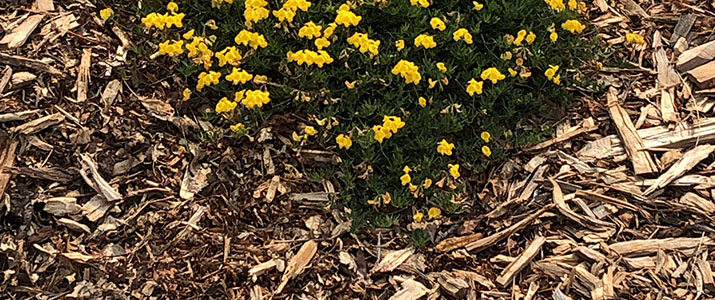
Improving your soil
The benefit of growing local native plants is they have adapted to local soils. However, if you still find it hard to grow particular plants, the soil can be adjusted.
For heavy clays – dig in compost or manure and add gypsum to loosen the soil and help to break down the clays. Raising the soil level, even just 30cm, will also assist with drainage in boggy spots.
For sandy soils – dig in organic matter such as compost or cow manure to increase the nutrients in the soil. As sandy soils drain very rapidly, it is important to keep the garden beds well mulched to retain moisture. The use of organic mulches such as sugarcane mulch will also break down increasing the nutrients in the soil.
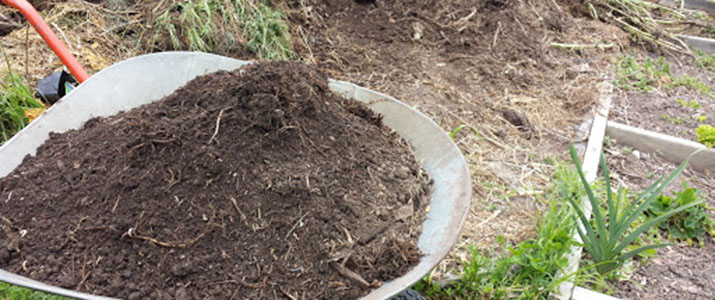
Fertilising
Usually native plants do not require fertilising. Rather, it is better to mulch or add leaf litter to boost soil nutrients. If you do choose to fertilise, use a specially designed native plant fertiliser or diluted worm castings.
Check the composition of your native plant fertiliser. The phosphorous level should be 3 per cent or less. Avoid chook manure, it often contains high levels of phosphorous.
Pruning
Pruning can help plants look lush and well-maintained for a tidy native garden look.
Pruning is best done after flowering, removing up to a third of the growth. You can also tip prune young native plants to promote branching. Tip pruning involves pinching the tips off plants, and helps the plant form dense hedge.
Council permission is generally required to prune trees on private property. You may need to obtain a permit. Find out more at Trees on your property - Pruning and removing.
Weeding
Weeds can be useful and are not always bad. In urban areas particularly, weeds play an important role in contributing to habitat for wildlife.
There are some invasive weeds however they should always be controlled or removed and if left alone will take over large areas, out compete other species and have disastrous effects on native plant communities and animals in our backyards, bushland, creeks and rivers.
The NSW Biosecurity Act (2015) outlines a list of weeds that must be controlled and removed from private property and public land. Some of these weeds include:
- Blackberry (Rubus fruticosus species aggregate)
- Frogbit (Limnobium laevigatum)
- Bridal Creeper (Asparagus declinatus)
- Water Hyacinth
- African Olive (Olea europaea subsp. cuspidata)
- Alligator Weed (Alternanthera philoxeroides)
- Green Cestrum (Cestrum parqui)
- Lantana (Lantana camara)
- Madeira Vine (Anredera cordifolia)
- Giant Reed (Arundo donax)
- Asparagus Fern (Asparagus virgatus)
Other common weeds that should be controlled include Asthma Weed (Chamaesyce hirta), Ochna (Ochna serrulata), Ivy (Hedera helix) and Camphor laurel (Cinnamomum camphora).
From left: Asthma weed, Alligator weed and Asparagus Fern.

Here are a few simple steps you can take to help control the spread of invasive weeds:
- Look out for unusual plants you haven’t seen before.
- Always dispose of weeds by placing them in your green bin.
- Never dump weeds in or near bushland.
- Choose garden plants carefully and avoid plants which spread easily.
- Manage your plants so they don’t spread into neighbouring properties or bushland.
- Check the Department of Primary Industries website for weed species that must be removed and advice on how to control them.
If weeds in your garden are being used by native wildlife, take a slow and careful approach in replacing them with natives to ensure you are not removing habitat areas all at once. If these weeds are contained and unlikely to spread, consider leaving them there and work on other areas in your garden that need more help.
If you are having trouble identifying any plant in your garden, take a photo and have it identified online by the Royal Botanic Gardens. Visit the Plant Net website
Monitoring wildlife
One of the most pleasurable activities you can do once you have created your habitat garden, is to sit back and watch your wildlife visitors.
Keeping an eye on the native animals in your garden and how they use the different plants and habitat areas you have created is a great indication of how well your efforts working.
You may be inspired to keep more formal records of what you see and there are a few ways to do this. You can participate in the annual Citizen Science events like the Birds in Backyards surveys, Aussie Backyard Bird Count, or the Australian Museum’s FrogID week. Residents can also join in on one of our Citizen Science programs.
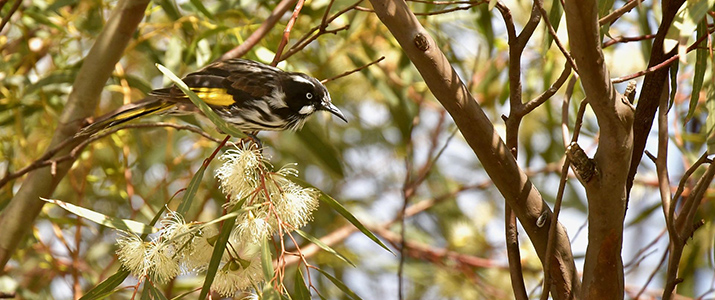
Native Wildlife Rescue
Native animals are part of our urban landscape and are exposed to accidents, injuries and sickness. These animals require specialist handling and MUST be assessed and rescued by trained wildlife rescuers. There are some options for Inner West residents, if you are unsure contact your local vet or one of the organisations below.
- NSW Wildlife Information, Rescue and Education Service (WIRES). A not-for-profit charity providing native animal rescue services through a network of volunteers. WIRES is the largest wildlife rescue organisation in Australia, and is licensed by the NSW National Parks and Wildlife Service. Their webpage includes information on current issues and contact details for their wildlife rescue call centre.
- Sydney Wildlife. A not–for–profit charity licensed by NSW National Parks and Wildlife Service. They rehabilitate and release sick, injured and orphaned native animals and educate the community, at all levels, about the need to protect our native animals and to preserve their habitats.